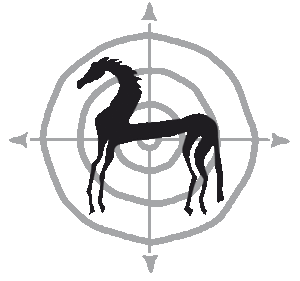Can my poor horse be outside in really cold weather?
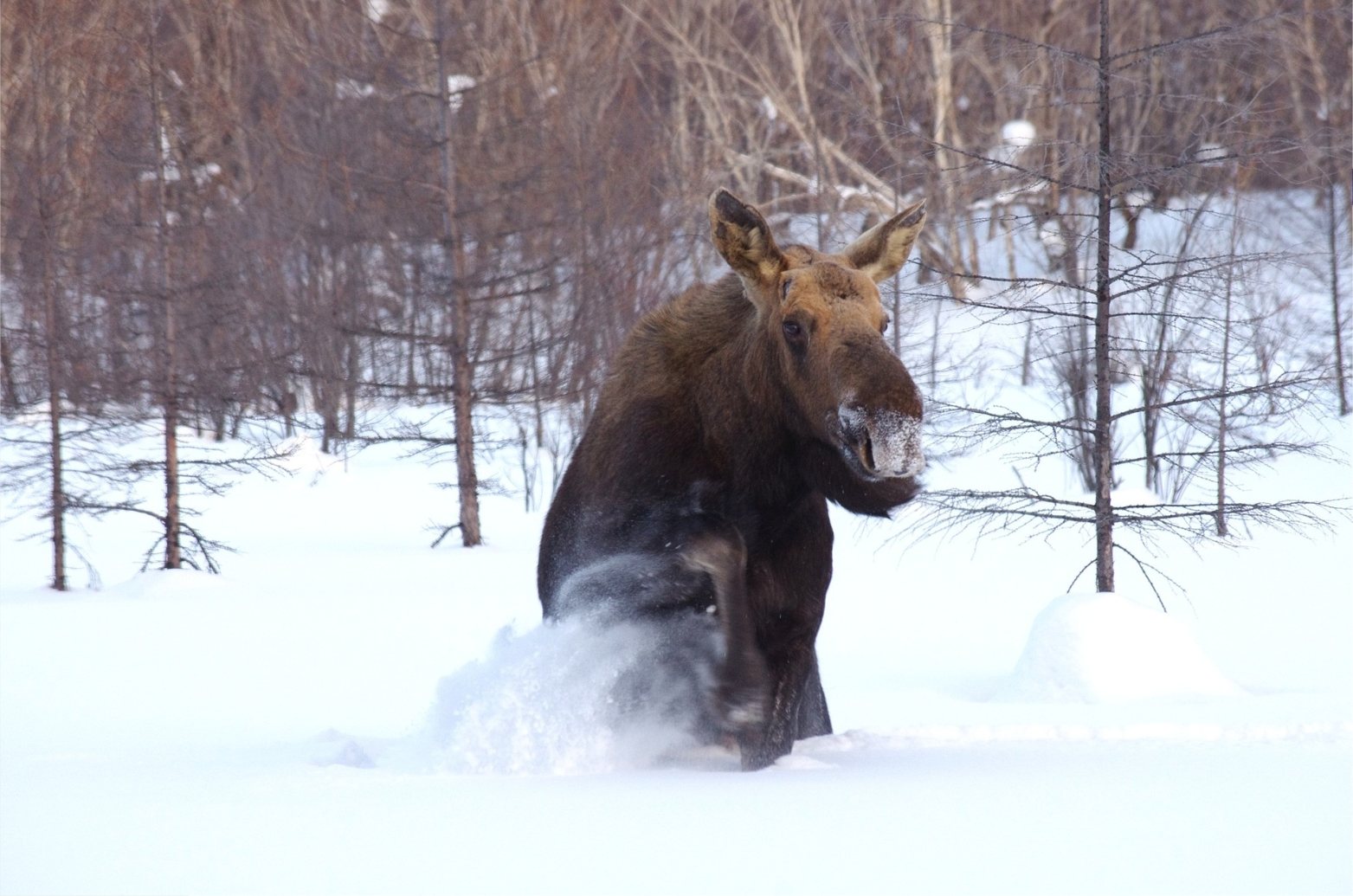
Can my poor horse be outside in really cold weather? And wait – why is there a picture of a moose on this blog page? Aren’t we talking about horses here?

Can horses be outside in really cold temperatures?
Our home, Raaken Farm, is in the south of Norway. Recently temperatures have been dropping to -25. (That’s in Celsius, by the way. In Fahrenheit it would be around -15.)
And it’s getting colder still….
This means record low temperatures, even for Norway. In an article about how to keep your animals safe in the cold the president of the Norwegian Veterinary Society mentions specifically that ‘large horses’ can have problems in low temperatures.
Amongst horse people, this is not an uncommon opinion: small hairy ponies can be outside in all kinds of weather. But large (sport)horses supposedly cannot ‘stand’ such temperatures. They should be kept inside as much as possible. Especially in cold weather.
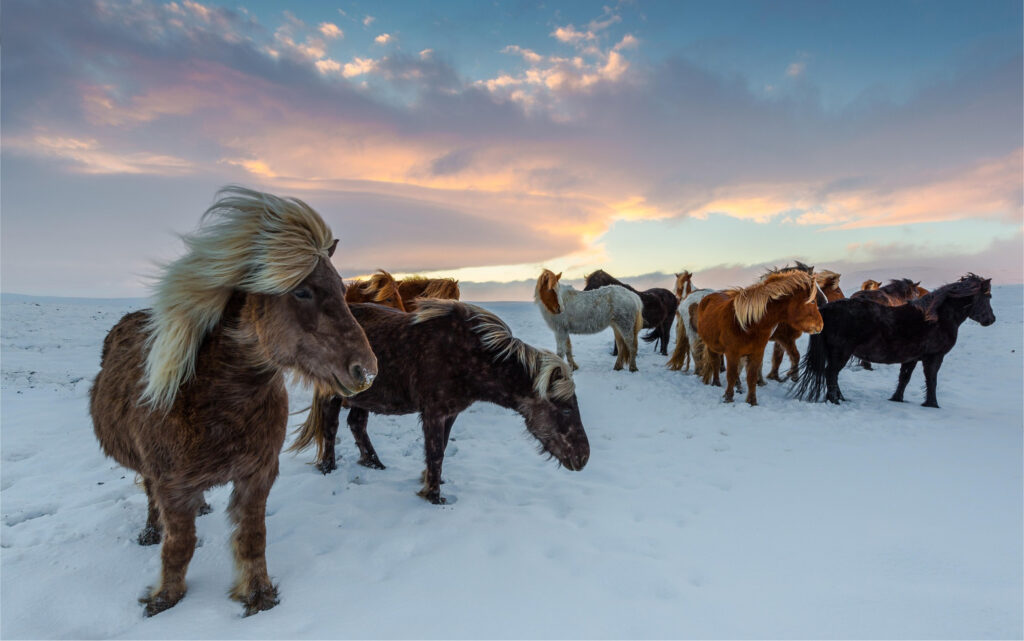
Is it true that only ‘hairy ponies’ can be outside in winter?
Our experience
Our experience is very different. Raaken Farm is home to a very mixed group of horses. Certainly not only hairy ponies.
We do have a Fjord horse (one of the Norwegian native breeds), and some Welsh Partbreds (with a Welsh Cob father and Warmblood Riding Horse mothers). We also have some large Warmblood Riding Horses, and even some very refined Trakehners with a lot of Thoroughbred and Arab in their pedigrees.
All the horses on our farm are living outside year-round. They have open shelters they can go freely in and out of. Meaning they can choose themselves where they want to be.
They like to stand under a roof when it’s raining, but when it’s cold – even very cold – you will find them outside most of the time.
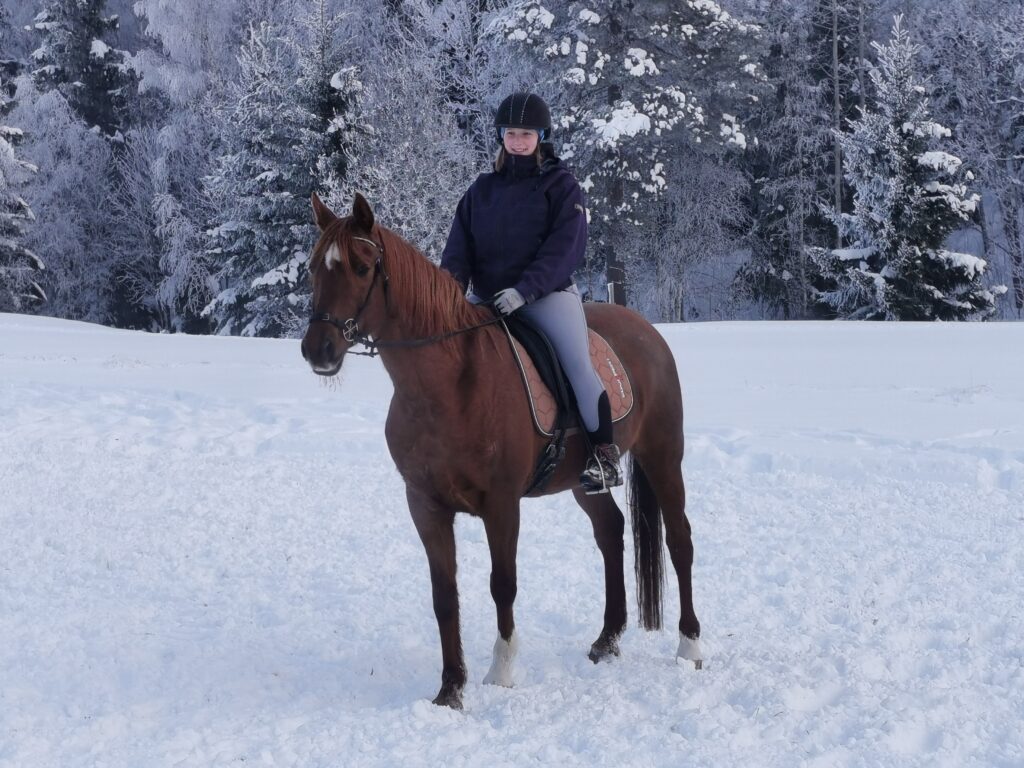
Raaken Farm is home to all kinds of horses, including some that are definitely not ‘hairy ponies’. This mare is a purebred Trakehner with a quarter Arab. Like all our horses, she is living outside year-round and without shoes.
If a moose can….
Can my poor horse be outside in really cold weather if a moose can?
The answer is: yes, probably.
Moose, deer and other wild animals can have trouble in very cold winters. However, usually it’s not the cold itself that is the problem – it’s the lack of food and water. It’s hard to find somewhere to graze if everything is covered under a thick layer of snow.
If there is enough food, they usually manage fine. Even without a stable to go into.
Of course, this doesn’t mean your horse should live like a moose does – but maybe we can learn from the moose what our horses need to thrive outside – even in very cold weather?
After all, there are lots of benefits if your horse can be outside in winter, too.
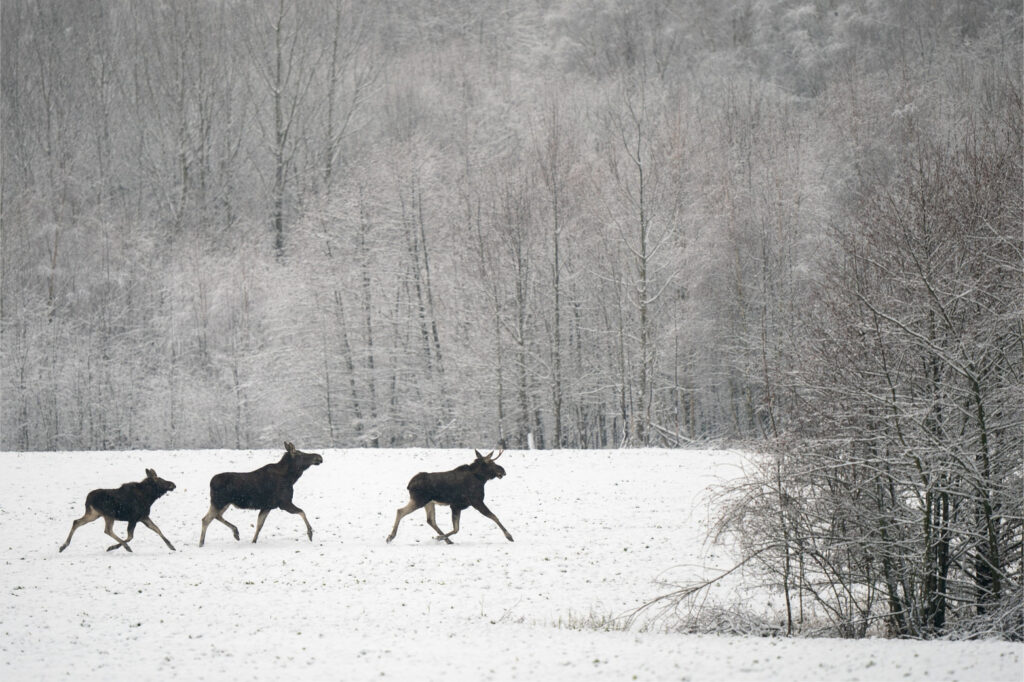
Are these moose on their way to the stable…?
The benefits of having your horse outside
Horses are creatures of movement – evolution has made them so.
Your horse will most likely be a lot happier if he can be outside, move freely and play around.
He will be less stiff (especially older horses), and it will take less time for you to warm him up.
Not only that, but most likely he will also be a lot less ‘fresh’ when you ride him. We all know how easily our horses can turn into ‘bombs on legs’ if the weather is cold. And even more so if they are cooped up in their stable most of the time. This is not only dangerous to the rider (and everybody else handling the horse), it also means the horse usually explodes without enough warm-up.
A typical scenario is when a horse is very fresh and gets lunged before the rider gets on. This is, of course, safer for the rider. But if the horse comes straight from the stable, that means a higher risk of tendon trouble, pulled muscles, kicking off a shoe, and so on. If the horse has not been able to move freely before riding, he will need at least 15 to 20 minutes walking before he is warmed up enough to ‘explode’ safely!
In other words: letting your horse move freely outside might save you a lot of trouble – and a lot of time, too!
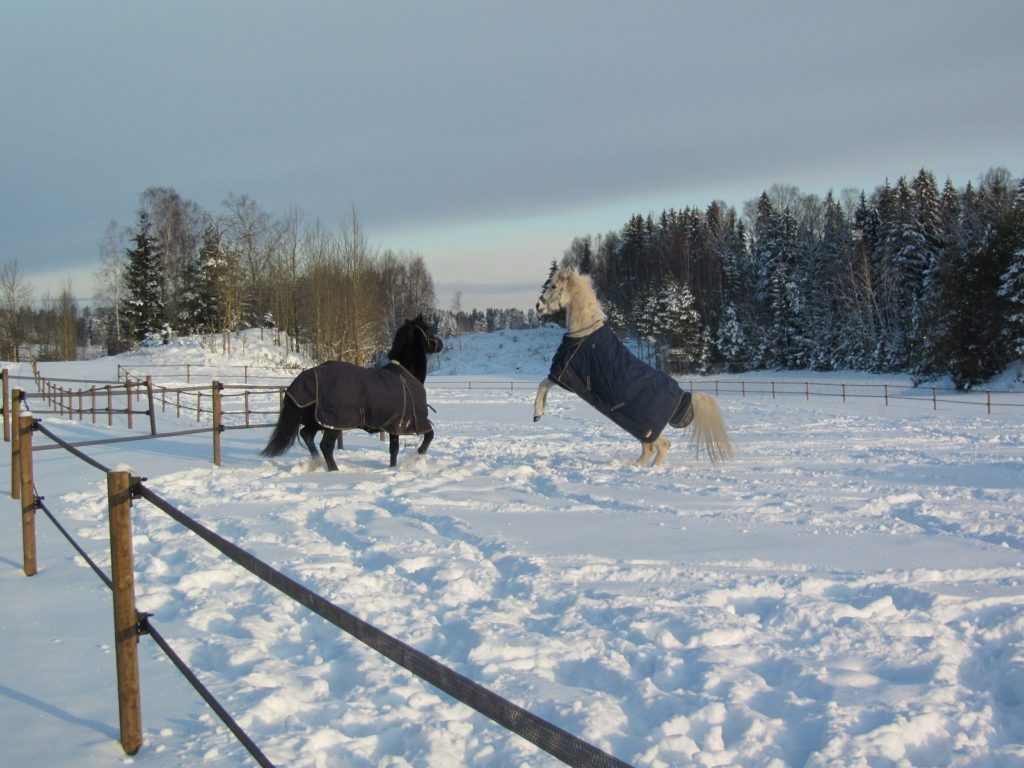
Letting your horse play outside in winter will keep him happier and healthier. Not only that – he will also be safer for you to ride if he can get all that cold weather energy out by playing with a buddy!
A breath of fresh air
Even in countries like Norway there are many stables that are not built for really cold weather. Meaning: the water pipes might freeze if the stable gets too cold.
Horses generate heat. A stable with horses in it will be warmer than an empty stable.
If it gets so cold that the water pipes start freezing, some stable owners will try to keep the stable warm by keeping the horses indoors. And by keeping every door and window closed, too.
This will usually have a very negative effect on the air quality in the stable. Horses poop and pee in their stables, and this creates ammonia fumes. Without enough air circulation, your horse will be breathing in those fumes for many hours every day. Which is certainly not good for their lungs.
If you can smell ammonia when you enter the stable – the air quality is certainly not good enough for your horse! And probably it already is a problem for the horse before you can smell it. Especially in stables that are in buildings with lower ceilings and not enough natural air circulation.
Some stables try to solve the problem by having fans on day and night, or creating other forms of ‘forced air circulation’. This might help improve the air quality inside. Unfortunately many of these systems are fairly noisy, and can be very stressful for the horses because of the increased noise level.
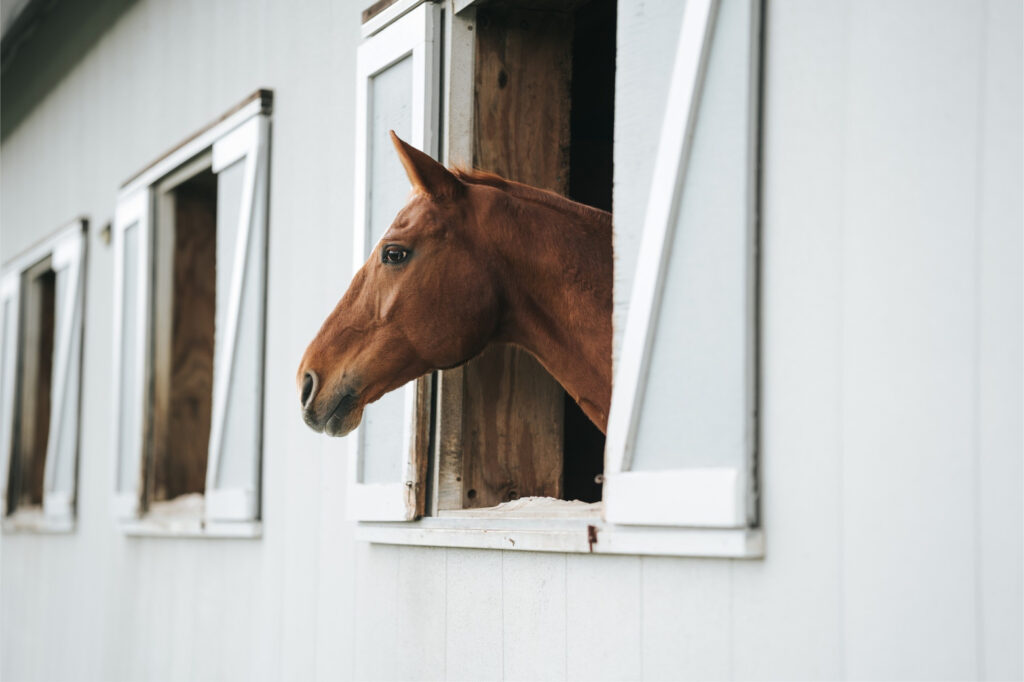
Horses need large amounts of fresh air to keep their lungs healthy. Also in winter!
Can my poor horse be outside in really cold weather? YES – if…
It’s clear there are many benefits to letting your horse be outside. Even in really cold weather. For extensive turnout or even to live outside, like our horses.
What does it take to keep your horse healthy and happy outside in cold weather?
Enough (hay) to eat
One of the most important factors is enough to eat. Meaning roughage (hay), not concentrates. In really cold weather it might even be a good idea to cut back on concentrates, especially if the horse doesn’t get his usual amount of exercise.
Cold weather makes horses burn more calories. The digestion process helps keep horses warm, and a filled stomach will keep him happy (just like hot chocolate makes a winter walk more enjoyable!). So the solution is to increase the amount of hay (or haylage/silage) your horse gets.
Hay can be expensive. It’s also possible to add straw to your horse’s diet. Even tree branches give them something to nibble on (but no added calories).
We sometimes open a bale of straw on the field, so the horses have something to nibble on the whole time. They will also play with it and even sleep in it – although some of them prefer to sleep next to the straw, in the snow!
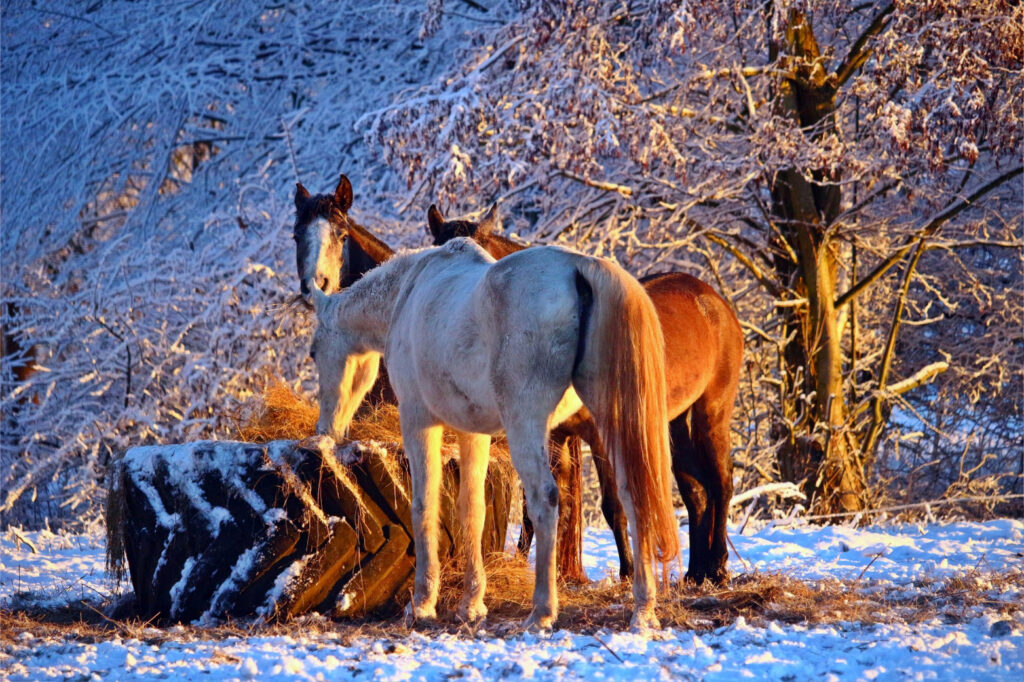
Horses that are outside in cold weather should have enough roughage to eat. Hay, straw, or even bushes and trees to nibble on will help keep them warm.
Enough to drink
Cold weather often means dry weather. If your horse then gets more hay, too, he might need more water to avoid colic.
Heated water containers are expensive, but great.
If it’s difficult to fix an electrical outlet, a ‘hay box’ might be something to try.
This means that you put a water bucket (or other container) inside a bigger container and fill the space in between with some kind of insulating material. Hay or straw, for example. Or insulation foam from a hardware store. Just make sure you build it in such a way that your horse cannot eat the insulation, whatever type you use. For example, by covering the opening between the containers with wooden planks (safely screwed in, of course).
Room to move
Again: horses are creatures of movement. Just being outside is not enough – they need some room to move! Ideally a big field or, at the least, a roomy paddock.
Many horses are stuck outside in very small paddocks (‘postage stamps’), with no food or water. Those are usually also the horses that like to come into the stable. But maybe that same horse in a bigger paddock, with extra hay and water, some shelter and some company, would be very happy outside?
A reason to move
Which brings us to the next requirement. Namely, a reason to move.
Horses are very social creatures. Almost all of them thrive best when they have company. Not only is it essential for their mental health, they will also move more when being with a buddy or in a group. More movement means they keep themselves warmer. (And, as mentioned above, also less stiff and less explosive when ridden).
Another easy way to increase movement is to not put hay next to the water. If you scatter your horse’s hay around the paddock, it will encourage him to use the whole area. If your horse is lucky enough to be outside with a friend – or even to live in a herd – remember the ‘Rule for Feeding’: Make at least as many heaps of hay as there are horses plus one more.
If the paddock is big enough, you could even put in a fence halfway, that doesn’t go all the way to the end. With water on one side, and food on the other, he will have to move around the fence every time he wants one or the other. You can find many more suggestions if you search online for ‘Paddock Paradise’.
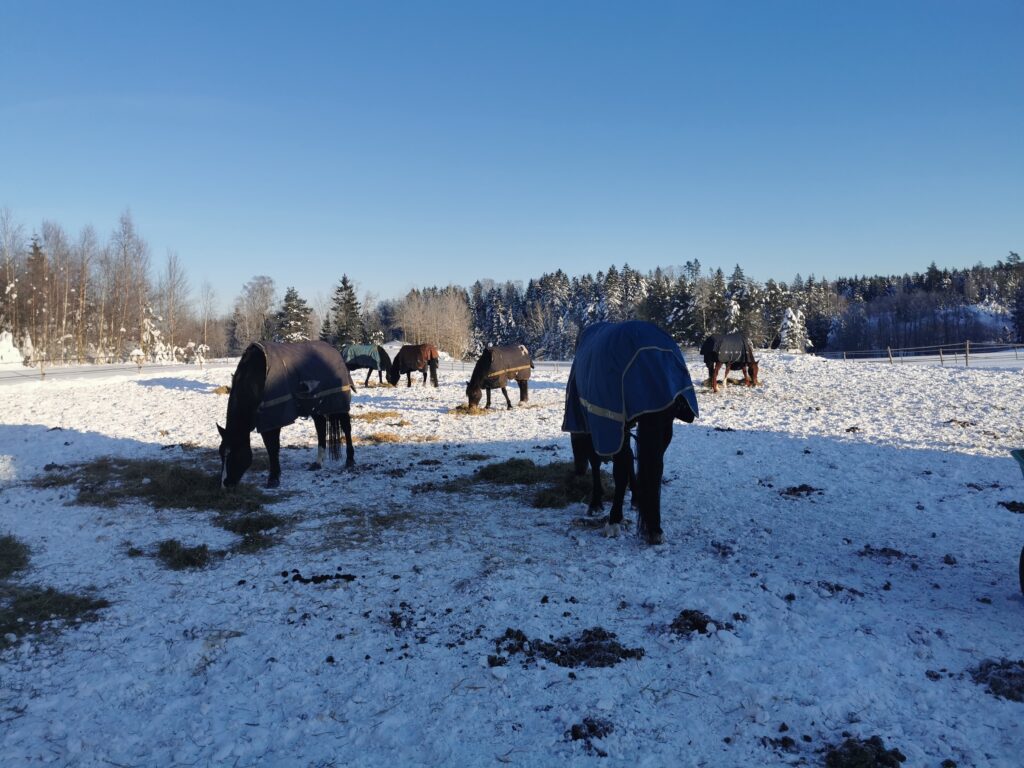
Give your horse reasons to move – also in winter. The company of other horses and spreading out his food, for example.
Blankets: Yes or no?
Does your horse need a blanket (or two) in cold weather, if a moose can do without?
The answer: use common sense and know your horse.
A hairy pony with a long and thick coat might be much happier without a blanket.
A thin-skinned Thoroughbred with a thin and silky coat might need two, or even three blankets.
If your horse is clipped, he will need blankets for sure until spring comes (or his coat grows back).
We do regular ‘temperature checks’ on all the horses here. We check under the blankets from several sides (shoulder, hind part and back) to feel if they are too warm, too cold or just right. And then we adjust blankets accordingly.
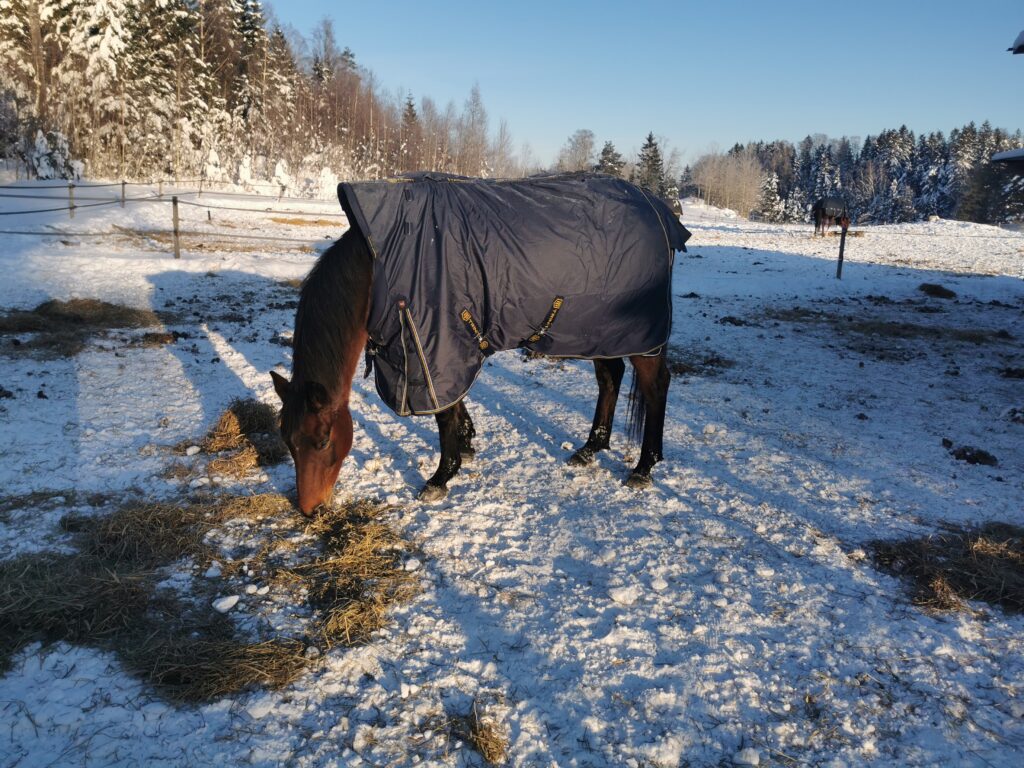
Does your horse need a blanket – or maybe even two? Regular checks will give you the answer.
Shoes: Yes or no?
All our horses here at Raaken Farm go without shoes, year-round. If necessary, for example when riding on stony roads, we use hoof boots.
If it gets icy, we keep them in smaller paddocks (not in the fields) where we can put out gravel if necessary. But even then they have the possibility to move in and around the smaller paddocks, and to choose if they want to stand under a roof or not.
Snow is most often not a problem. Barefoot hooves are usually warm (not cold, like in most horses with shoes). So there is very little snow building up under the hooves.
Barefoot also means less risk of losing a shoe in the snow. And the best thing: the risk for injury is much smaller, so it’s easier to have our horses together in groups. With all the mental and physical benefits that entails!
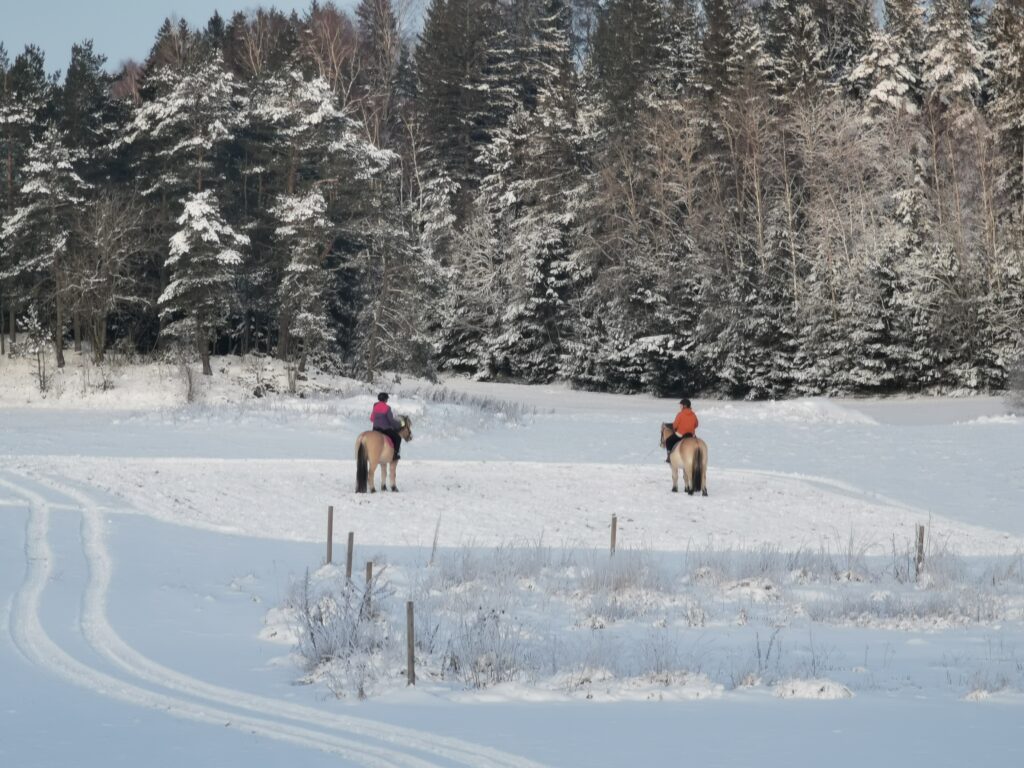
Using barefoot horses in winter is not a problem. Because their feet are warmer, they often will have less of a problem with snow packing under their hooves than horses with shoes.
Let horses be horses…
We all know what humans need to be healthy and happy. Regular exercise, decent food, meaningful relationships, not too much stress… And even though we might find it tempting to spend all our time indoors in winter, we know that – as long as we dress warmly – some time outside every day will be good for us, whatever the weather.
The To Do-list for horses looks a lot the same. For them it’s even more important to have enough movement. And if we want happy and healthy horses, even very cold weather should not stop us from giving that to them. As you can read in this post, there are many things we can do to make even very cold weather enjoyable for our horses.
Don’t risk missing out – sign up here, and the next blog posts will automatically land in your inbox.
BONUS: you will get this FREE E-BOOK! With 10 easy tips how you can be a better rider, already today. Because our horses deserve that we are the best riders we can be.
Any questions or comments? Feel free to share with us in the comments.
